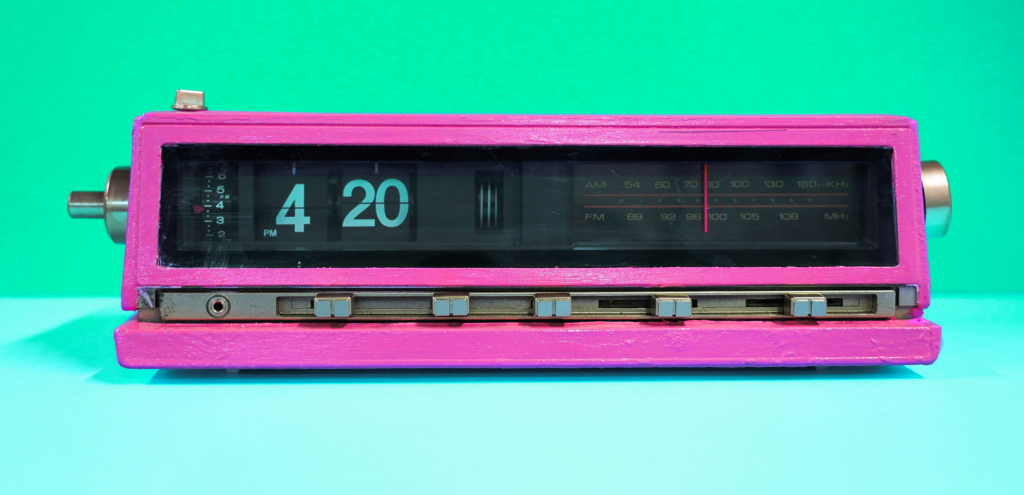420 has evolved from a secret meeting place for a few students to a globally recognized symbol of cannabis culture. Find out how an agreed time became the icon of a movement and which aspects of social life are influenced by this code.
The most important facts at a glance
- The code ‘420’ originated from a group of students called ‘The Waldos’ who met at San Rafael High School at 4:20 p.m. in 1971 to search for an abandoned cannabis plantation.
- April 20, also known as ‘420’, has become a worldwide cannabis culture event, where people demonstrate for the legalization of cannabis.
- The 420 culture has influenced music, media and language and has also become symbolic in the political campaign to legalize cannabis.
The roots of “420”: How it all began

The origin of the code word “420” takes us back to 1971, to San Rafael High School, where a group of students who called themselves “The Waldos” coined this mysterious code. The origin of “4:20 Louis”, or “four twenty”, was the meeting time at the statue of Louis Pasteur on the school grounds, which the Waldos used to organize their search for an abandoned cannabis plantation.
This particular meeting place and time was perfect for coding the use of cannabis among the students.
The legend of the Waldos and their treasure map
Adventurous and inspired by a treasure map given to them by the original planter, the Waldos began their search for the secret cannabis plantation. They met regularly at 4:20 pm, a time that not only fitted in perfectly after school, but also led to the inspiration for the code “420”. But despite their efforts, the cannabis plantation remained a secret, a legend – and “420” developed into a much bigger phenomenon.
From a local anecdote to a worldwide phenomenon
What began as a local anecdote reached a wider audience through reporting in the San Francisco Chronicle. There was also a connection between the Waldos and the psychedelic rock band Grateful Dead, who popularized the code “420” among their fans and beyond.
This is how the term took its course from the statue of Louis Pasteur to a global cult that went far beyond the boundaries of the original cannabis culture and played a significant role in history.
April 20 as a global event: 420 Day

April 20, or “4/20” in English, has established itself as an unofficial counterculture holiday. On this date, people around the world meet to smoke weed together and loudly support the demand for the legalization of cannabis.
The “420 Day” or “World Skipper Day” is now a permanent fixture in many event calendars, from Washington Square Park to Hyde Park, and shows the solidarity of the community.
Cultural influences: 420 in music and media
The 420 culture has also had a strong influence on music and media. Artists like:
- Bob Dylan
- Afroman
- Snoop Dogg
- Wiz Khalifa
- Bands like Cypress Hill
have created songs that have become anthems of cannabis culture. These works range from celebrations of getting high to political demands for legalization and reflect the diversity of cannabis culture.
Spotify 420 playlist:
You are currently viewing a placeholder content from Spotify. To access the actual content, click the button below. Please note that doing so will share data with third-party providers.
More InformationCannabis and code words: the language of the stoner scene
Special code words and slang expressions have developed within the stoner scene, ranging from terms for cannabis such as “grass” and “weed” to expressions for the state of consumption such as “high” and “stoned”. This language is not only used for discretion, but also to create a common identity among cannabis users. The stoner code is an important part of this identity.
Social perspectives: The debate about 420 and cannabis
The debates surrounding cannabis and the activities associated with “420” are complex and multi-layered. While some support the legalization of cannabis, there are also concerns about the health effects, especially for young people. Nevertheless, studies show that there is no increased risk of fatal traffic accidents on April 20, which disproves the assumption that increased cannabis consumption on this day leads to more accidents.
Cannabis legalization and the 420 code

The code “420” has achieved symbolic significance in the political campaign to legalize cannabis. Draft laws and political campaigns use the date to draw attention to the issue and initiate changes to the law.
In Germany, for example, steps are being taken to distribute cannabis to adults in a controlled form, to regulate cannabis consumption and thus to ensure quality standards.
420 in the digital age: online communities and celebrations
The digital age has opened up new dimensions for the 420 culture. Online communities and social media campaigns contribute significantly to the spread and celebration of 420 Day.
Virtual meetings and digital platforms make it possible for the community to come together and celebrate the day without being physically present.
420 in the healthcare sector
The growing recognition of cannabis in the health sector cannot be overlooked. Cannabinoids such as CBD and THC are increasingly valued for their therapeutic benefits.
Events such as our CANNAFRIENDS trade fairoffer a platform for providing information about these developments and promoting dialog between experts and interested parties.
Summary
The journey through the world of “420” shows us how a simple code could rise to become a global phenomenon with deep roots in cannabis culture. It represents not only the consumption of cannabis, but also a striving for social acceptance and legal change. It remains exciting to see how “420” will continue to influence society, culture and legislation.
Frequently asked questions
They say “420” because it’s the code word for regular cannabis use and originated in the U.S., where San Rafael High School students met daily at 4:20 p.m. (in the afternoon) to smoke pot in 1971.
April 20 is celebrated as “Stoner’s Day” because the number 420 dates back to the time when five friends were looking for a cannabis plantation and used the number 420 to remember their dates.
“420 friendly” means that the person either uses marijuana themselves or is positive about using marijuana and accepts it when others around them use marijuana.
The number 420 comes from the USA, where it is used as a code word for regular cannabis use. It originated at San Rafael High School in 1971, where students met daily at 4:20 p.m. to smoke pot.
“420” has manifested itself in music and the media through numerous mentions in songs and movies, often conveying a positive image of cannabis use and promoting the spread of cannabis culture.






